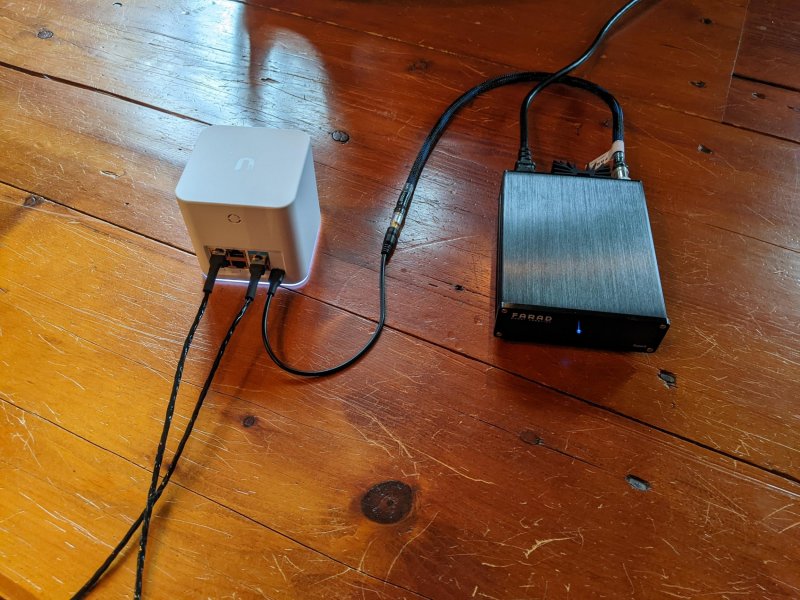After simplifying the IT signal chain, I have more to report. The CAT5e plenum cable is stiff as far as cables are concerned and I’ve always found stiff wire to taker longer to break-in than soft or limp wire. This is no exception. After several days of use this cable sounds very natural.
I’m currently using Belden 7928A cable and Molex 0449150021 connectors.
The cable is plenum rated and uses 24-gauge solid copper conductors with FEP insulation. The connectors use pins with 50micron gold plating. The pins attach directly to the cable with no additional internal contacts or circuit boards like most of the bulkier CAT connectors use.
Now that the cable was fully run-in the next thing to try was replacing the stock switching supply that the Amplifi router uses. I have a spare Farad 12v supply now that I’m no longer using switches. I picked up a 2x2.5mm female barrel to USB-C male adaptor so I could use the Farad supply with the Amplifi router. (
Amazon.com: Cablecc USB 3.1 Type C USB-C to DC 5.5 2.5mm Power Jack Extension Charge Cable for Air Pro 10cm : Electronics).
View attachment 90511
I laid it out on the floor of the listening room so I could easily swap out cables and power supplies before committing to install it permanently.
The difference between the stock supply and the Farad is large. Using a better power supply brings all the same positives to the router that it does with most other audio devices. Things are more analog and organic sounding. Midrange and highs are smoother. Bass is more powerful and weighty. Low level details that were not audible before are there now. Micro and macro dynamics have improved.
IT signal chain: Dedicated IP address, Arris SB8200 with LPS, 30’ CAT5e plenum cable, Amplifi router with LPS, 20’ CAT5e plenum cable, Extreme.
I think I will stop here and wait for the Taiko switch, card and router until I try any further changes to the IT signal path.
My system has never sounded as good as it does now. Time to turn off the lights and listen.



